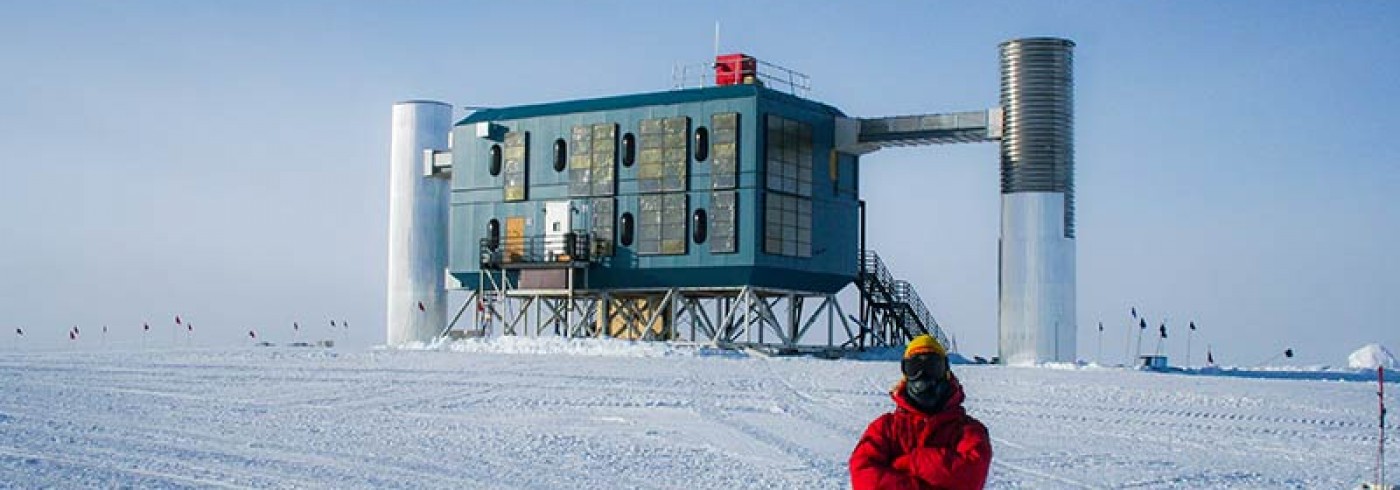IceCube – Searching for extraterrestrial neutrinos casting light in the Antarctic ice
1 January 2007 - 31 December 2008Passing over the Transantarctic Mountains in a Hercules cargo compartment, a balmy feeling of experiencing something unique, almost surreal, stole up on us.
The purpose of IceCube is to detect neutrinos. Similarly to ordinary telescopes, which detect photons, cosmological phenomena are studied to increase our understanding of the Universe. Extraterrestrial neutrinos are produced in connection with energetic events such as supernovae. The neutrino is an elementary particle that rarely interacts with the surrounding medium. As a consequence it can travel vast distances unimpeded, as well as from the interior of extremely energetic cosmological objects. The capability of observing neutrinos opens a new window on the Universe and one hopes to find answers to fundamental questions within astrophysics and cosmology. Among these are the origin of cosmic rays, the nature of dark matter, and the physics behind the most luminous objects in the Universe, gamma-ray bursts and active galactic nuclei.
The fact that neutrinos rarely interact with the surrounding medium makes them difficult to detect. When a neutrino does interact, a very energetic charged particle is often produced. Traversing the medium, this particle will emit so-called Cherenkov radiation. If the medium is transparent this radiation can be detected, which is the principle behind indirect detection of neutrinos in IceCube.
Building a gigantic detector
The construction of IceCube was commenced in 2004, and construction of its predecessor, AMANDA, which is now a part of IceCube, in 1993. The current IceCube detector comprises 2 400 digital optical modules installed on 40 strings at a depth of 1.5 to 2.5 km in the Antarctic ice. Each module contains a 25 cm photomultiplier tube and is extremely sensitive to photons. The Antarctic ice is the cleanest ice on Earth and the dark surroundings make it possible to detect very faint light. Because neutrinos interact so rarely a huge detector volume is required. At the completion of IceCube, which is planned for the austral summer of 2010–2011, the detector volume will have reached 1 km³.
Already data from 2006 have shown that the spectrum of atmospheric neutrinos agrees with predictions from theory and simulations of the detector. Data from the 2007 configuration of IceCube, with 22 strings, have been analyzed and new limits have been set on the neutrino flux. A conclusive signal from extraterrestrial neutrinos is yet to be found.
Successful work
After a day of acclimatisation the work began to set up the drill for the drilling season. So many hoses to drag, cables to connect, motors to start, heaters to tune in, new pumps to install. The first week was certainly full of hard work! The altitude of 2 800 metre, a humidity of 0% and the cold did its best to delay us, but we were nevertheless able to start drilling just a few days after schedule. Despite this and the fact that the 13th hole was the first hole we could drill without interruption, this season was the most successful so far. The drill crew managed to drill 18 holes and actually finished a few days ahead of schedule, far better than most people had expected. After a quick teardown of the drill camp and a move to the new location for the next season we found ourselves again sitting in a Hercules pondering the opportunities that had been given to us.


